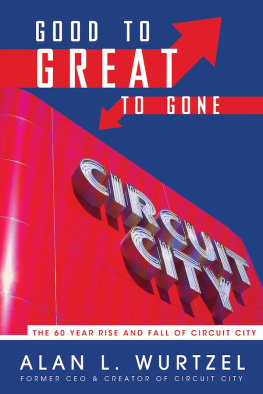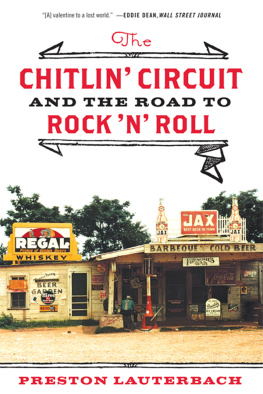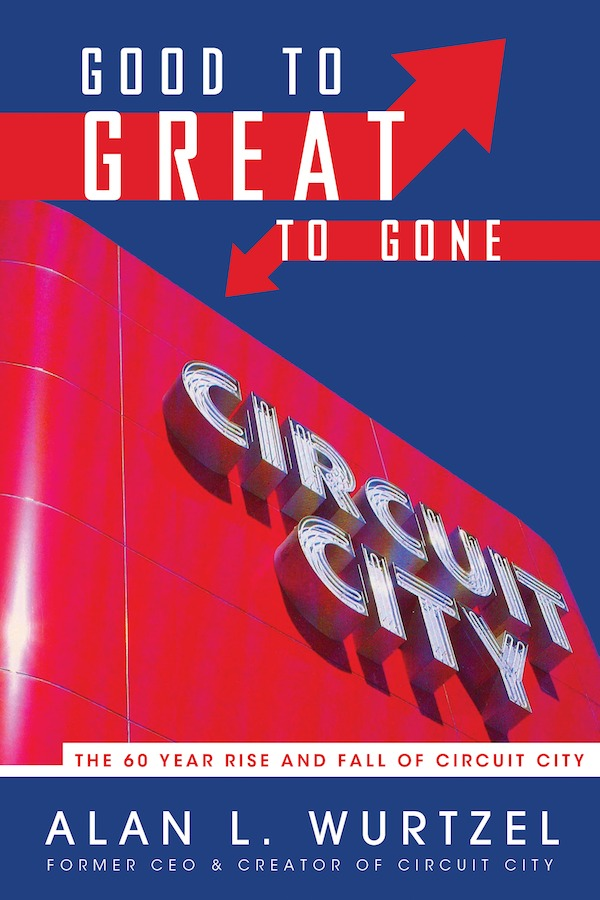at all levels and their families.
For over sixty years these dedicated men and women gave their best to provide customers with a great shopping experience. This book is especially dedicated to those, who, through no fault of their own, lost their livelihood and their dreams when the company faltered and then collapsed.
PROLOGUE: BANKRUPT
In business, the competition will bite you if you keep running; if you stand still, they will swallow you.
~William Knudsen
Dateline: January 16, 2009. U.S. Courthouse, Richmond, Virginia. The courtroom is crowded with reporters as well as lawyers for Circuit City, its numerous suppliers, and the creditors committee. Tensions are running high. There have been ten days of round-the-clock negotiations. The parties and their counsels are tired and frustrated at not having reached agreement.
Over the previous two years, the company has shed over $5 billion in stock market value. It posted just one profitable quarter since mid-2006. Circuit Citys net worth has shrunk to little or nothing. It is bleeding cash, having run through more than $200 million between March and August 2008 and untold sums since.
U.S. Bankruptcy Judge Kevin R. Huennekens, in what he says is one of the hardest decisions he has made during his two years on the bench, orders Circuit City Stores Inc. to liquidate its assets to meet the claims of creditors. Circuit City is ordered to close all 567 store locations by March 31, putting 34,000 employees out of work.
It has been a long fall from the top. Since the late 1980s Circuit City had been recognized by Wall Street and business insiders as the best-run, best-managed, and most profitable specialty retailer of electronics and appliances in the country.
From 1982 to 1997, Circuit Citys stock price had outperformed that of the general stock market by an incredible 18.5 times, far better than any other Fortune 500 company for any fifteen-year period since 1965. Yet just twelve years later, Circuit City was no more.
In the process of growing from a single store located in the front of a tire recapping shop to a nationwide colossus, Circuit City transformed consumer electronics retailing; launched CarMax, a revolutionary new way to sell used cars; and provided employment to hundreds of thousands as well as excellent savings and service to millions of consumers.
This is the sixty-year saga of a company that grew from a Richmond, Virginia, mom-and-pop TV store to become an industry leader before it ultimately stumbled and subsequently died.
I know the story well. My father, Sam Wurtzel, founded Circuit City (then known as Wards) in 1949. I joined the company in 1966, became CEO in 1973, and held that position until 1986, when I retired to pursue other interests. I remained on the board until 2001.
I recognize that my direct involvement as the son of the founder, as the second CEO, and as a longtime board member is both an asset and a liability. On the plus side, I was an interested observer for the full sixty years of Circuit Citys existence and an active participant for more than thirty years; in the course of writing this book, I was able to interview more than forty of the people who were there after I left.
On the liability side, I am, admittedly, not a totally objective observer. It is impossible to escape the human tendency to admire ones own successes and explain away ones mistakes. In writing this account, I have tried to be as objective and self-critical as I know how to be. Only the reader can judge if I have been successful.
Some of the decisions I criticize were mine; some were made by friends and colleagues, including my father. I have tried to be impartial in my examination of both the good and the not-so-good decisions that were made. All of the judgments are mine, but I am reassured by the fact that every one of them is shared by other key individuals who played significant roles in the business.
My purpose in telling the story, however, is not primarily to record the companys history but to shed light on the strategic decisions, good and bad, that successive management teams made, especially at key times in the life of the companyand to see if there are any lessons to be learned from these decisions.
In a sense, this book can be viewed as a case study, illustrating some of the principles developed by Jim Collins in his two books, Good to Great and its sequel, How the Mighty Fall , neither of which was published until well after I left Circuit City. When Jim called to interview me for Good to Great in 1998 I didnt know that Circuit City was one of only eleven companies to outperform the Fortune 500 by at least three times for fifteen years. Nor did I have any idea that I had, during my tenure, unconsciously followed many of the management principles shared by his eleven good to great companies. I had simply been doing my best to make commonsense, long-range strategic and operational decisions in collaboration with the board and my senior colleagues. I knew, for instance, that people were the key to success, but I did not talk about who gets on the bus. I did try to be analytical and honest, without calling it confront[ing] the brutal facts. With a strong push from my board, I simplified our business and became a hedgehog, knowing one thing well, instead of a fox that knows many things superficially. I also built the company patiently and step-by-step, or, to use Collinss term, tended the flywheel. When I read Good to Great , however, I realized that these were brilliant metaphors for many of the policies my associates and I had followed in the course of building Circuit City.
More recently, as Circuit City was dying, I had another conversation with Collins about How the Mighty Fall . Although I was not an officer, director, or even a shareholder during Circuit Citys last eight years in business, when I read that book I was struck, once again, by how perfect his metaphors were:
Hubris, Born of Success
Undisciplined Pursuit of More
Denial of Risk and Peril
Grasping for Salvation
Capitulation to Irrelevance or Death
They all described the last days of Circuit City. I am grateful to Jim for creating an intellectual framework for thinking about the fall as well as the rise of Circuit City.
Turning Points
In the multi-decade life of any company, indeed any industry, there are turning points at which the company needs to be reinventedmoments when the business model needs to be revised to accommodate changes in the competitive landscape, including the economy, technology, customer preferences, and so forth. The retail scene is littered with examples of companies that made, or failed to make, these necessary transitions.













